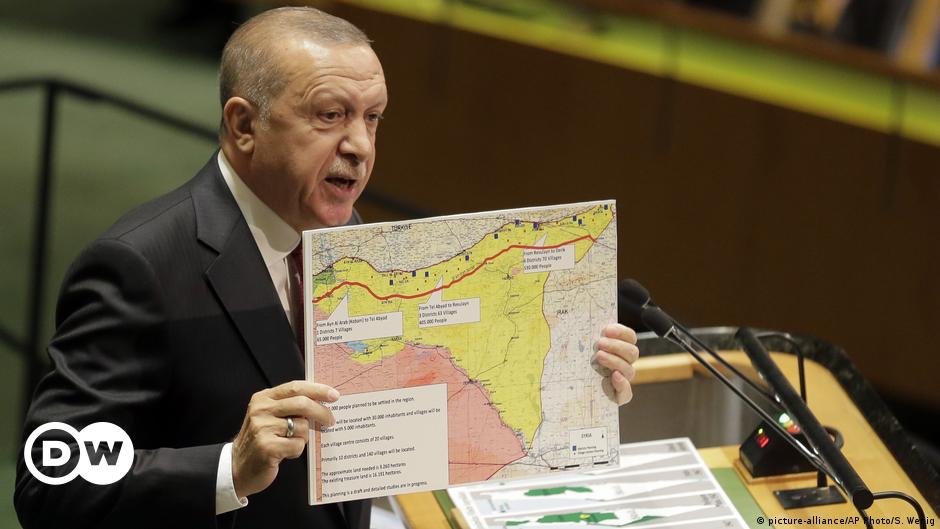Violations Documentation Center February 28, 2021
Accusations are increasing that Turkey is using water as a card to blackmail its neighbors, in Syria and Iraq alike, and it resorted to cutting the waters of the Tigris and Euphrates rivers frequently and has built several dams on the two rivers, which affects the few water shares that reach both Syria and Iraq.
In Syria, the dams built and built by Turkey on the Euphrates have led to a decline in the Syrians ’share of the river, to less than a quarter of the internationally agreed amount, which are unprecedented levels.
The most prominent of these dams is the Ataturk Dam in the Turkish province of Urfa, which is the largest dam in the country, while the situation is not much different for Iraq, as Turkish practices contributed to the decline of the level of the Tigris River significantly through the huge Ilisu Dam that Turkey built on the river.
The drop in the water level in the Euphrates River threatens a humanitarian catastrophe in the eastern region and the Euphrates Basin and threatens the lives of people in eastern Syria, and the low water level disrupts agriculture, energy supplies, electricity and dry crops, and threatens to spread diseases and hinder efforts to combat Covid 9 / Corona virus.
The Syrian farmers who depend on the Euphrates fear that agriculture will stop due to the low level of the river, and the reason for the low level is the source country of Turkey, which reduces the flow of the river through the Euphrates Dam.
The water of the river is the backbone of many aspects of life in the Karagh Qozak region, near Kobani, Raqqa and Deir Ezzor, as an entry into Iraqi lands.
Sources from the Syrian Dams Administration say that the Turkish authorities have once again set out to reduce the quantities of water resources passing through the course of the Euphrates River, to become the average of the incoming during the last period and since the beginning of January 2021, less than a quarter of the amount agreed upon under the agreement signed between the countries that share the course of the river from Upstream to downstream, which is a very low import that does not meet the operating and investment requirements for such period of the year.
She warned of catastrophic consequences for the population, especially as the reduction in water flow coincided with the irrigation season in which the amount of water consumed to meet its needs reached its peak, which also contributed to another decline in the levels of the three dam lakes, where the level of Tishreen Lake reached 320.70 m on 2/27 / 2021 and the level of the Euphrates Lake 301.70 m at the same date, which are levels close to the minimum if compared to their counterparts in the same period of previous years, and that the Tishreen dam has become at the threshold of the dead level, which is 320.01 m, and this level is what cannot be He has to operate the dam to obtain the necessary electrical energy, even if at a minimum.
In addition to the foregoing, these serious negative effects that threaten the environment due to the lack of water reserves and the increase in pollution (the increasing concentration of industrial waste and sanitation for cities located on the river bed) in the Euphrates lakes, and thus their direct impact on the population and the increasing spread of diseases among them due to the presence of about nine million people. They live on its banks and depend on it to secure drinking water directly from it, without forgetting the consequences of this on the environmental wealth, agricultural activities and their attachments, and the disastrous direct impacts it has on the societal economy and general food security for citizens, and on efforts to combat the Coronavirus pandemic, Covid-19.

